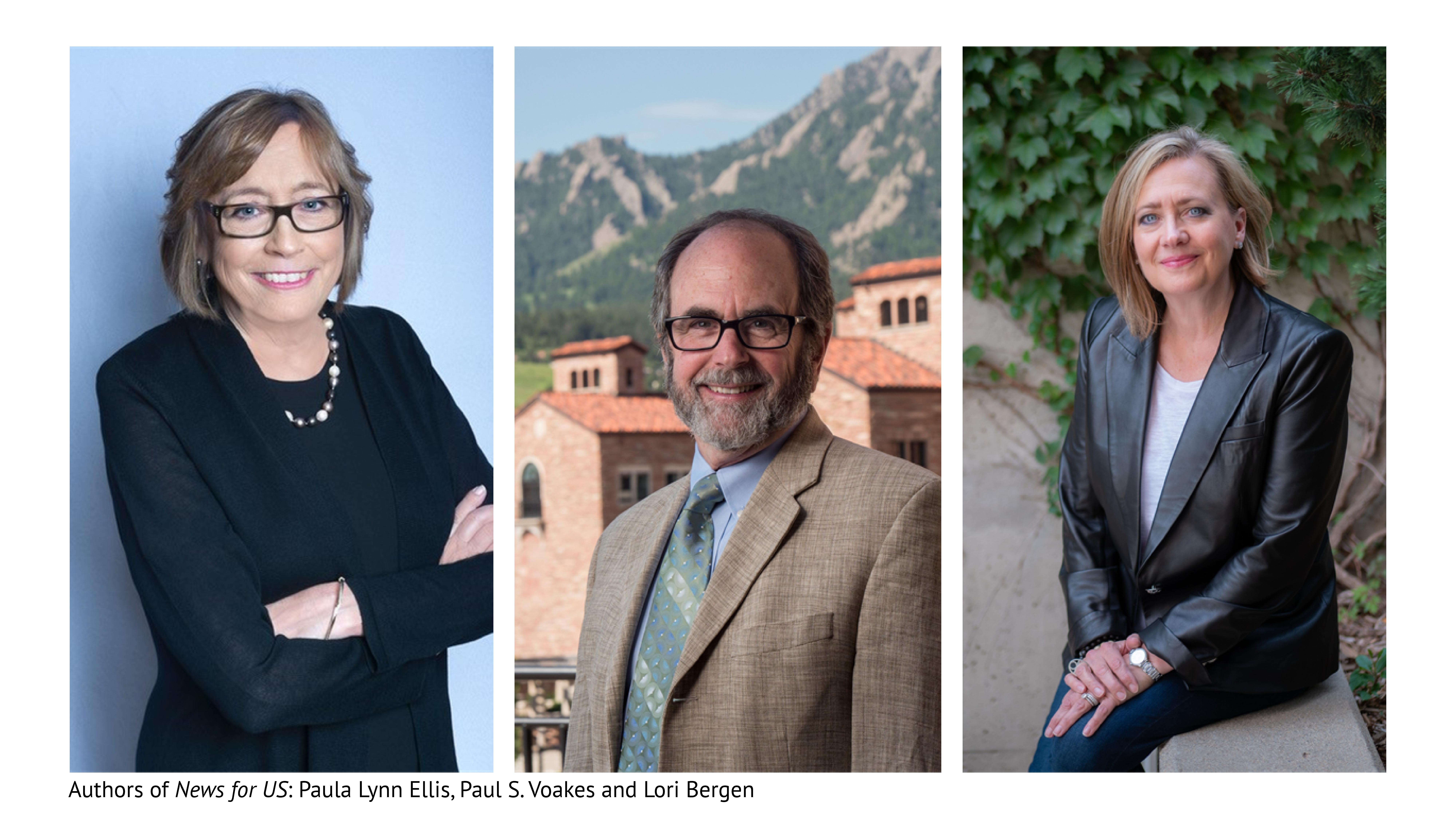By Maura Casey
The rise of the Internet has shaken up few industries as much as it has the news media, particularly print, where in the 1990s the future seemed secure and finances flush. If newspapers were well-fed felines before the millennium, the World Wide Web and social media would soon make them more like stray cats scavenging for their next meal. Within ten years easy access to information proliferated online. Everyone who wanted to publish their views did so and shared widely. As print revenue tanked, news companies scrambled to go online, staunch the losses and find a future. Newspapers, and journalism itself, entered a crisis from which it has yet to emerge.
It was during this time that I received a wry note from an editor at the Providence (R.I.) Journal. “We are all becoming blacksmiths,” he wrote.
His prediction hasn’t quite come true. But looking back on the assumptions I and other journalists made for decades – before my own layoff in 2009 – it’s hard not to take account of journalism without remembering what once was, and what now is. For starters, newsrooms lost nearly 92,000 jobs between 2008 and 2020, according to the outplacement firm Chellenger, Gray & Christmas, Inc, which has been tracking media layoffs since 2003.
Trust in national news media has fallen precipitously since 2016, Pew asserted in June, accenting America’s partisan divide. “In just five years, the percentage of Republicans with at least some trust in national news organizations has been cut in half – dropping from 70 percent in 2016 to 35 percent this year.” This is in stark contrast with Democrats. About 78 percent of Democrats and Democratic-leaning independents say they have “a lot” or “some” trust in the information that comes from national news. Among all adults, that translates to a drop from 76 percent to 58 percent.
Yet the Pew report also had a surprising bit of good news. When the organization measured the public’s trust in local news organizations—the local daily newspaper, the weekly that lands in the mailbox every week, or the evening TV newscast—trust is much higher. Democrats’ trust in local news barely dropped (from 85 percent to 84 percent) between 2016 and 2021. Trust among Republicans fell from 79 percent to 66 percent. Among all adults, trust fell from 82 percent to 75 percent. People respond to local media coverage with less suspicion.
 Thus, it makes sense that local news should be the landscape upon which a renewed practice of journalism begins, one with robust news coverage but also one that supports democracy in subtle but important ways. So says a new textbook, News For US: Citizen Centered Journalism, by Paula Lynn Ellis, Paul S. Voakes and Lori Bergen.
Thus, it makes sense that local news should be the landscape upon which a renewed practice of journalism begins, one with robust news coverage but also one that supports democracy in subtle but important ways. So says a new textbook, News For US: Citizen Centered Journalism, by Paula Lynn Ellis, Paul S. Voakes and Lori Bergen.
This book is radical in the best possible way. It takes a fresh look at the only profession protected in the U.S. Bill of Rights—the press—and evaluates the current multi-layered information network that is available to anyone for free. It asks, in essence, what is it that journalists bring to the party? The answer is “a lot.” But this book does more than engage in a defensive litany of the burdens of the media. Instead, provocatively, it asks journalists to consider a different set of professional norms than those that prevailed for the last century or so.
Such a clarion call is overdue. It’s about time the profession embarked upon a rethink. The three authors, with well over a half-century of journalism experience and additional years in academia among them, are more than qualified to reconsider the profession’s role in this challenging information era. Journalists’ assumptions about their profession are desperately in need of reconsideration. It is clear that local news is the best place to start innovating.

Journalists once saw themselves as gatekeepers responsible for depositing facts at the doors of citizens who could get that information in no other way. Now, of course, an avalanche of information is available at the click of a mouse, offering a varied communication system of networks where once-clear distinctions between fact and myth, opinion and truth, advocacy and entertainment are constantly evolving and impinging upon what was considered serious news.
Journalists in the pre-Internet age also often saw their most vital roles as providing unbiased perspective and facts about problems such as pollution or homelessness. Once the story was written, the public would be left to figure out what to do; for a journalist to get involved would jeopardize his prized neutrality. Then, very often, it was onto the next issue. The trouble is, News for US points out, this approach often seemed more like “extractive journalism,” in which journalists viewed sources as ripe for exploitation or extraction. The sources were good for quotes to sprinkle through stories, but otherwise ignored and often never interviewed again.
Such a practice was never great, but in today’s media environment contributes to suspicion, polarization and a lack of trust. If instead journalists engaged citizens in difficult conversations and reflect, with them, on shared public problems as well as solutions, journalists would see a change. They, and the stories they write, could become resources far more valuable than what is gained at the click of a mouse and shore up the lack of trust that threatens journalism’s future. In short, the authors pitch is for “relational journalism”—an ongoing relationship between journalists and citizens to help them improve daily life in their communities.
This is far different than the role of information gatekeeper that has been in place for the last century. Reading this book made me feel as though this approach not only supports robust news gathering but encourages reporters to work with the public in ways that support the decision-making all people must make about shared problems.
The authors make clear that their call for a shift in a professional mindset does not include shedding the traditional roles of journalism that are so vital to democracy. At its most basic level, they contend, our country continues to need journalism to provide a reliable set of facts, provide context for the news, keep a careful, watchdog eye on government, provide analysis and help people understand others whose experiences are different from their own. But they also point out that democracy needs citizens to do far more than vote once or twice a year. Democracy consists of citizens – not citizens in the legal sense, but any persons working on issues that affect us all – identifying, with others, common problems and engaging in the difficult work of solving them.
That’s the kind of democratic decision making that relational journalism is all about. It calls for viewing not just news-gathering, but democratic decision-making, in a different way.
News for US contends that citizen deliberation, not merely the votes of state and national legislatures, make up the core of any democracy. Deliberating on an issue is not merely debating two sides, for that very battle between polarizing choices contains elements of the very divides that hamper us. Instead, true deliberation takes into account more than two sides, and every considered action also weighs downsides or tradeoffs of any possible solution.
To appreciate how this can work, the book expands the view of democracy to include the six democratic practices that Kettering Foundation research has shown fuels the life of neighborhoods and communities and facilitate citizens working together. It places democracy in the purview of citizen action.
Citizens deliberating together would:
- Identify and define a problem;
- Pinpoint the values that underlie the problem, such as security or freedom;
- Weigh different courses of action and how they would affect those things of value;
- Identify assets within the community – not just government money – that could help address the issue, even intangible assets such as enthusiasm;
- Make a decision after weighing possible downsides;
- Organize for long-term follow-up with the problem.
The authors say that democracy and journalism are stronger when such deliberation takes place and when media professionals can report on and help facilitate such decision-making. They should also see no contradiction between caring about their communities and journalism objectivity. In the process, journalists would be better at their jobs and the public would trust them more if they saw their communities as networks of people and considered their own role in relationship to them.
The book marshals robust examples to show that this can be done. To name just a few:
Spaceship Media, founded by two media professionals, engages in what it calls Dialog Journalism to help news organizations engage in conversations that are most important to the communities they cover. To help them do this, Spaceship has a seven-step process that enables communities to talk about, and journalists to engage in and report on, conversations that even encompass ordinarily divisive issues such as gun regulation or abortion. This process, Spaceship believes, creates a “triangle of trust” between the media and the communities they serve. It puts listening and communities in the center.
Alabama Media has forged an innovative path while publishing stories in the state’s three largest newspapers and al.com. Alabama media in 2019 invited women to describe what it was like to be a woman in the state. The outreach sparked an overwhelming response in 36 hours from women of all colors, ages, ethnic backgrounds, political beliefs, and income brackets. The essays were shared across Alabama on media platforms with comments turned off, so women could speak without being attacked. The company then created Reckon Women, a Facebook group to discuss what women needed to thrive. About 1,000 women joined and Spaceship Media helped guide the conversations. These efforts led to more stories and an investigative reporting project on motherhood, among other outcomes. Supporting citizen dialogues and community connections are central to this approach, and along the way, helped al.com produce great stories.
KALW, the public radio station in the San Francisco area, believes that the way to combat distrust is to produce news “with the people,” according to former news director Ben Trefny. That pivot occurred when covering plans to build 8,000 affordable housing units on Treasure Island. Journalists began to cover the issue as a binary choice involving building on contaminated soil for minority and low-income apartments. But KALW, instead, asked the public for its views, and the response was so nuanced that it reshaped reporting. Citizens said they would live there if the land were made safe. The experience was so enlightening that the radio station has continued to meet with citizens and has trained neighborhood residents in diverse communities in reporting their own stories.
There are more examples that the authors have lined up in their book to show that journalism can adapt to this challenging media world without shedding the aspects that make it still so crucial to democracy. Ellis, Voakes and Bergen are reliable and thoughtful guides to ways in which reporting and editing could be more trustworthy to the general public while enabling reporters to do what they love – gather great stories along the way. Where so many see nothing but an internet minefield, blowing up the news, these authors see opportunity. In a pointed contrast to doomsayers about the future of the press, theirs is a message of hope, and all the more vital for that.
Maura Casey is a former New York Times editorial writer and a senior associate of the Kettering Foundation.



